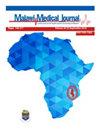Utilisation of standardised outcomes measures by clinical Physiotherapists working in Namibia: a nationwide cross-sectional study
IF 1.2
4区 医学
Q4 PUBLIC, ENVIRONMENTAL & OCCUPATIONAL HEALTH
引用次数: 0
Abstract
Introduction The utilisation of standardised outcome measures (SOMs) is crucial for evaluating patients’ health status. Physiotherapists are highly recommended to use SOMs routinely. Despite the well-documented benefits of using SOMs, the utilisation of SOMs in clinical practice is still problematic particularly in Africa. In Namibia, there is dearth of information about SOMs utilisation by physiotherapists and the associated factors. This study was aimed at determining the extent of routine utilisation of SOMs and the associated demographic and work-related factors among physiotherapists. Methods A cross-sectional, nationwide, online survey was conducted and all registered qualified physiotherapists and intern physiotherapists working in public or private hospitals/clinics were invited to participate. Data was analysed using Statistical Package for the Social Sciences (SPSS) version 29.0. The Chi-square (χ2) and Fishers exact test investigated the relationship between the associated factors and routine SOMs utilisation. The alpha level was set at 0.05.Results Of 230 participants who received the invitational link, 99 (43.0%) responded timeously to the call to participate. Although 97.9% (n=94) of the participants indicated having used at least one type of SOMs in the last six months, the frequency of utilisation varied. Routine utilisation, defined as 70%-100% of the time, was reported in only 49.0% of the participants. The Chi-square test only showed significant findings for gender (p=0.01) and clinical specialty (p=0.004). The odds of utilising SOMs were 4.13 greater among physiotherapists with a clinical specialty and 3.88 times greater for females than males.ConclusionThe rates for routine utilisation of SOMs by Namibian physiotherapists are unfavourable. Female gender and clinical specialty influenced the utilisation of SOMs in daily clinical practice. Cognisant of the study limitations, these results call for the need to improve the routine utilisation of the SOMs in Namibia.纳米比亚临床物理治疗师对标准化结果测量的利用:一项全国性横断面研究
导言 使用标准化结果测量(SOMs)对于评估患者的健康状况至关重要。物理治疗师被强烈推荐常规使用 SOMs。尽管使用 SOMs 的益处有据可查,但在临床实践中使用 SOMs 仍然存在问题,尤其是在非洲。在纳米比亚,有关物理治疗师使用 SOMs 及其相关因素的信息十分匮乏。本研究旨在确定物理治疗师对 SOM 的常规使用程度以及相关的人口和工作因素。方法 在全国范围内开展横断面在线调查,邀请所有在公立或私立医院/诊所工作的注册合格物理治疗师和实习物理治疗师参与。数据使用社会科学统计软件包(SPSS)29.0 版进行分析。采用卡方检验(χ2)和菲舍尔精确检验来研究相关因素与常规SOMs使用率之间的关系。结果 在收到邀请链接的 230 名参与者中,99 人(43.0%)及时响应了参与号召。尽管97.9%(94人)的参与者表示在过去六个月中至少使用过一种SOMs,但使用频率各不相同。仅有 49.0% 的参与者表示常规使用(定义为 70%-100% 的时间)。卡方检验仅对性别(P=0.01)和临床专业(P=0.004)有显著性结果。具有临床专业的物理治疗师使用SOMs的几率比男性高4.13倍,女性比男性高3.88倍。女性性别和临床专业影响了SOM在日常临床实践中的使用率。考虑到研究的局限性,这些结果呼吁纳米比亚有必要提高SOMs的常规使用率。
本文章由计算机程序翻译,如有差异,请以英文原文为准。
求助全文
约1分钟内获得全文
求助全文
来源期刊

Malawi Medical Journal
Medicine-General Medicine
CiteScore
1.50
自引率
0.00%
发文量
27
审稿时长
>12 weeks
期刊介绍:
Driven and guided by the priorities articulated in the Malawi National Health Research Agenda, the Malawi Medical Journal publishes original research, short reports, case reports, viewpoints, insightful editorials and commentaries that are of high quality, informative and applicable to the Malawian and sub-Saharan Africa regions. Our particular interest is to publish evidence-based research that impacts and informs national health policies and medical practice in Malawi and the broader region.
Topics covered in the journal include, but are not limited to:
- Communicable diseases (HIV and AIDS, Malaria, TB, etc.)
- Non-communicable diseases (Cardiovascular diseases, cancer, diabetes, etc.)
- Sexual and Reproductive Health (Adolescent health, education, pregnancy and abortion, STDs and HIV and AIDS, etc.)
- Mental health
- Environmental health
- Nutrition
- Health systems and health policy (Leadership, ethics, and governance)
- Community systems strengthening research
- Injury, trauma, and surgical disorders
 求助内容:
求助内容: 应助结果提醒方式:
应助结果提醒方式:


